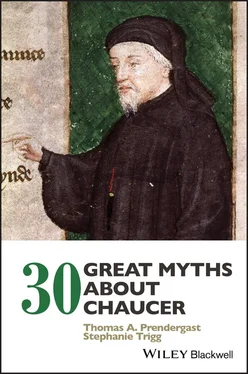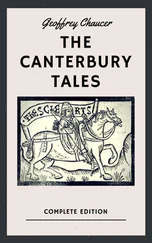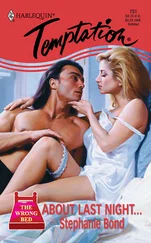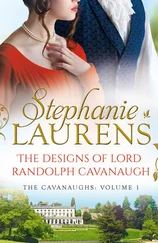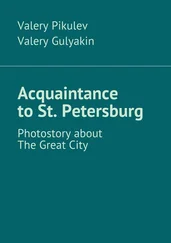Interestingly, in this essay from 1945 Galway makes no claims about the poet’s “real” feeling, but her identification of Joan of Kent as the subject of these lines has been interestingly misread as if Galway were making a biographical statement about Chaucer’s state of mind. Galway had first proposed this identification in 1938, and it was the subject of much debate in the 1940s. Most scholars argued against Galway, suggesting that the idea of a long lovesickness was a conventional feature of the French love poetry of the period – especially the poems by Guillaume de Machaut which were the sources for The Book of the Duchess – and so there was no need to argue for a particular candidate. In 1971, though, Edward Condren revived the idea and suggested that in The Book of the Duchess Chaucer is describing his own “profound emotional reaction to the death of Blanche of Lancaster.” 9
The argument that a motif, an image, an allusion or a metaphor is “conventional” and therefore less interesting or less worthy than an idea that might come from the poet’s own heart or mind has a long and interesting history in English poetry, and the history of Chaucer criticism plays an important role here. For many decades in the twentieth century it was a truism that Chaucer began his poetic career as a more or less slavish imitator of French poetry, and as a devoted servant of rhetorical models and manuals such as Geoffrey of Vinsauf’s Poetria Nova . He then looked to Italy and the writings of Dante, Petrarch and Boccaccio as narrative models, before finally developing his own distinctively English poetic style and inaugurating the traditions of English poetry. In an influential essay for the British Academy, J.M. Manly laid out this trajectory of Chaucer moving away from the “thin prettinesses” of the French tradition to a more robust and native poetic line. 10 Through articles such as this, the idea of “convention” was devalued, but also strengthened as an explanation for much of Chaucer’s poetry, and there was, we suggest, an insistent masculinization of Chaucer in the critical practice that dismissed biographical equivalents and lovesickness in favor of a learned familiarity with poetic traditions and conventions. As we will see on many occasions in this book, the critical “myths” about Chaucer are deeply imbricated in the politics of changing critical styles.
Derek Pearsall takes a different, more meta view and argues that the lines in The Book of the Duchess are a deliberately opaque allusion that invites exactly this kind of speculation or gossip about the identity of this early love: “At the beginning, the poet pictures himself as sorrowful and unable to sleep, because of some eight‐year sickness that he mysteriously refuses to specify: Chaucer put this in as a talking‐point, and it has certainly provoked a great deal of talk.” 11
Indeed, the phenomenon of courtly gossip is important here, and there are a number of myths surrounding the identity and actions of Joan of Kent, who was apparently famous for her beauty as well as her fashion sense. 12 In some accounts of the founding of the Order of the Garter by Edward III in 1346, she is identified with the “Countess of Salisbury” (with whom the King was apparently enamored), whose garter embarrassingly fell to the ground (itself an important “myth of origins” 13 ). Joan was first Lady Holland, then Countess of Salisbury, before becoming the Princess of Wales after marrying Edward III’s eldest son, the Black Prince. But as Leo Carruthers points out, there is considerable doubt as to who might have been the Countess of Salisbury at the time of the Order’s founding. 14
Even though the critical tradition is at best equivocal about the possibility of diagnosing “genuine” as opposed to a performative, complimentary unrequited love, the idea of Chaucer’s own loves has a second life in the biographical and fictional traditions of medievalism and medievalist historical fiction.
One of the most influential texts here is Anya Seton’s extremely popular fictionalized biography of Katherine Swynford, Chaucer’s sister‐in‐law. 15 Katherine, the younger sister of Chaucer’s wife Philippa, was governess to John of Gaunt’s children from his first wife, Blanche of Lancaster, including the eldest, who would become Henry IV. She then became his mistress, and the mother of four children with Gaunt, before becoming his third wife in 1396. In Seton’s novel, Katherine comes to court when Philippa is engaged to Chaucer, and he becomes her confidant, explaining the gossip and the ways of the court to her. From the very beginning it is made clear that Chaucer adores Blanche, not as a publicly performed compliment to the Duchess or to Gaunt, his patron, but with a deeply felt, serious and hopeless love, which will never be expressed in public. The contrast is made clear: “His heart was laid at the feet of the lovely white Duchess and his practical future lay with Philippa, who suited him well enough.” 16 When Blanche dies of plague in September 1368, Chaucer is devastated and writes The Book of the Duchess in her honor as his own heartfelt expression of love. He sends the poem to Gaunt, who is appropriately amazed to read the depths of poetic feeling Chaucer has produced out of English forms. In contrast to the rumors about Philippa and Gaunt sharing a bed (see Myth 5), there is no hint in this work of any unseemly relationship between Philippa and Gaunt. Indeed, Katherine’s passionate sensuality is drawn in stark contrast to Philippa’s proper and practical character.
This idea that Chaucer suffered some kind of “unrequited love” for Blanche occurs in a number of other, later fictions that feature Chaucer, 17 though it plays no part in any recent biographical or critical study, such have the fashions in this area changed. We give the last word here to Derek Pearsall, who summed up the issue in his usual pithy style in his biography, dismissing the gossip about Chaucer’s relationship with Gaunt: “The desire to turn their association into a long‐running soap opera, which has inspired two biographers of Chaucer to prove how every one of Chaucer’s writings turns upon some event in his supposed patron’s exciting life, must be regarded as wishful thinking.” 18
1 1In this sense, Chaucer’s career fits the model outlined by Richard Helgerson for Renaissance poets, in Self‐Crowned Laureates: Spenser, Jonson, Milton, and the Literary System (Berkeley, CA: University of California Press, 1983), 80–82, where it fits a model first exemplified by Virgil. L . Lipking, The Life of the Poet: Beginning and Ending Poetic Careers (Chicago, IL: University of Chicago Press, 1981), xi, 76–80.
2 2William Godwin , The Life of Geoffrey Chaucer, the Early English Poet including Memoirs of his near friend and kinsman, John of Gaunt, Duke of Lancaster: with sketches of the Manners, Opinions, Arts and Literature of England in the Fourteenth Century, 4 vols., 2nd edn. (London: Printed by T. Davison for R. Phillips, 1804), II:372.
3 3Qtd. in Godwin, II:369–70.
4 4Margaret Galway , “Chaucer’s Hopeless Love,” MLN 60, no. 7 (1945), 431–9.
5 5Froissart refers to her as “cette jeune damoiselle de Kent,” but she does not seem to be called the “Fair Maid of Kent” in any contemporary authority. Les chroniques de Sire Jean Froissart, vol. II (Paris: Wattelier, 1867), 243.
6 6Galway, “Chaucer’s Hopeless Love,” 433.
7 7Margaret Galway , “Chaucer’s Sovereign Lady: A Study of the Prologue to the ‘Legend’ and Related Poems,” MLR 33, no. 2 (1938), 145–99 , here 176.
8 8Thomas Tyrwhitt was first to identify Alceste with Queen Anne; Paul Strohm , Hochon’s Arrow (Princeton, NJ: Princeton University Press, 2014), 116–19 , concurs with this view. For the less common association with Queen Philippa’s damoiselle, Alice Cestre, see Frederick Tupper , “Chaucer’s Lady of the Daisies,” Journal of English and Germanic Philology 21, no. 2 (1922), 293–317.
Читать дальше
